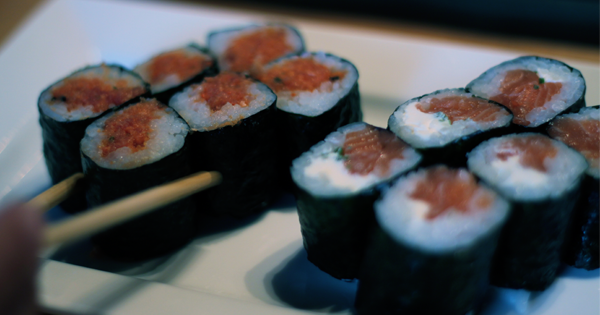Advertisement
If you love sushi (and who doesnŌĆÖt?), you probably have enjoyed at least one spicy tuna roll, maybe dozens. But before you order another plate of this spicy goodness, letŌĆÖs take a look at what youŌĆÖre really eating.
As it turns out, most of the tuna in your spicy tuna roll goes by the name of ŌĆ£tuna scrape.ŌĆØ Yes, itŌĆÖs just as gross as it sounds. PBS News Hour breaks it down:
ŌĆ£Scrape is the meat left behind on the tunaŌĆÖs skeleton after the fillet has been removed. ItŌĆÖs separated (or ŌĆ£scrapedŌĆØ) from the bone, usually in a factory in Asia, sealed in air-tight bags and shipped to your local sushi restaurant.ŌĆØ
Not only are you getting the tuna leftovers, but most of the time, itŌĆÖs not even fresh! Most restaurants will import frozen tuna scrape, since itŌĆÖs cheaper to purchase it when itŌĆÖs processed and frozen. In 2012, Food Safety News reported that while all imported seafood must be processed according to Hazard Analysis and Critical Control Points (HACCP) standards, itŌĆÖs difficult to tell just how good any imported tuna is by the time it reaches the United States. Even worse, the FDA only inspects two percent of all imported food! This allows contaminated tuna to slip right through the border and into your favorite sushi restaurant.
Is frozen tuna scrape actually dangerous, or is it only guilty of an unappetizing name? The evidence is incriminating. In 2012, there were 425 reported cases of salmonella as a result of imported, frozen tuna scrape. And that wasnŌĆÖt the first salmonella outbreak where tuna was the culprit. Before that, frozen tuna caused smaller-scale outbreaks in 2010 and 2007. Yikes!
So next time you go out for sushi, make sure you check that your tuna is fresh. Better yet, steer clear of tuna all together. After all, there are plenty of fish in the sea.
What's your favorite type of sushi? Will you be able to give up spicy tuna after this?
Photo Copyright ┬® 2009 aaronisnotcool/Flickr




